Fortaleza will face LDU Quito this Saturday in the Copa Sudamericana 2023 Final at the Municipal Domingo Burgueño Miguel in Maldonado, Uruguay.
On one side, we have a historical Brazilian club who is eighth in the Brasileirão and who only was defeated once in this South American competition. They have the best attack (27 goals) scored against nine suffered in 12 games played, which is a very good register in this competition. In his third season as head coach of Fortaleza, Juan Pablo Vojvoda is doing his best season so far with 38 wins, 11 draws and 18 defeats in 57 games disputed in all competitions.
On the other, we have the twelve-time champion of Ecuador, LDU Quito, who surpassed two teams in the knockout stage through penalties. Luis Zubeldía took over this side last year, and he’s doing quite well with 19 wins, 11 draws and only four defeats in this season’s 34 games disputed. At Copa Sudamericana, LDU has two defeats, four draws and seven wins, with a goal difference of 22-7.
In this tactical analysis, we’ll try to understand what are both team’s philosophies and ideas. We also want to highlight each team’s strengths and vulnerabilities, as well as ways they could potentially harm one another
We also leave you with some potential line-ups:
Fortaleza (4-2-3-1): J. Ricardo; Tinga (C); Brítez; Titi; Pacheco; C. Alexandre; Welison; Pikachu; Pochettino; Guilherme; Lucero;
LDU Quito (4-3-3): Domínguez; Quinteros; Ade; Rodríguez; Quiñónez; Piovi(C); Martínez; Julio; Ibarra; Alvarado; Guerrero;
Fortaleza
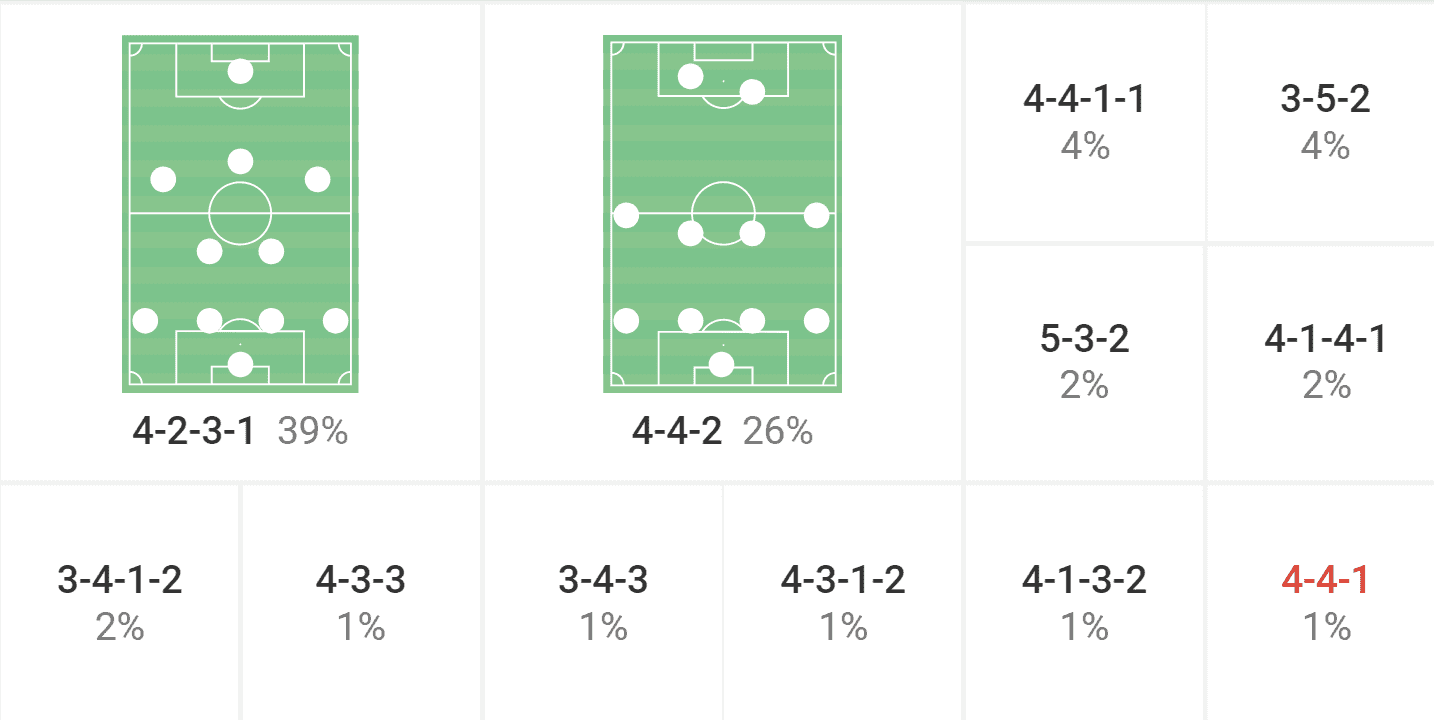
Vojvoda’s idea of a game is based on a patience game while in possession, whereby flowing the ball between the different sectors of the pitch and having the attackers deep creates space to progress. As we can see above, Fortaleza’s game plan is split into two main formations: 4-2-3-1 while attacking and a 4-4-2 without possession.
Let’s start with Fortaleza’s on-the-ball approach, where they prefer to build from the back in a three-man line, which is typically composed of the two centre-backs plus the right-back Tinga.
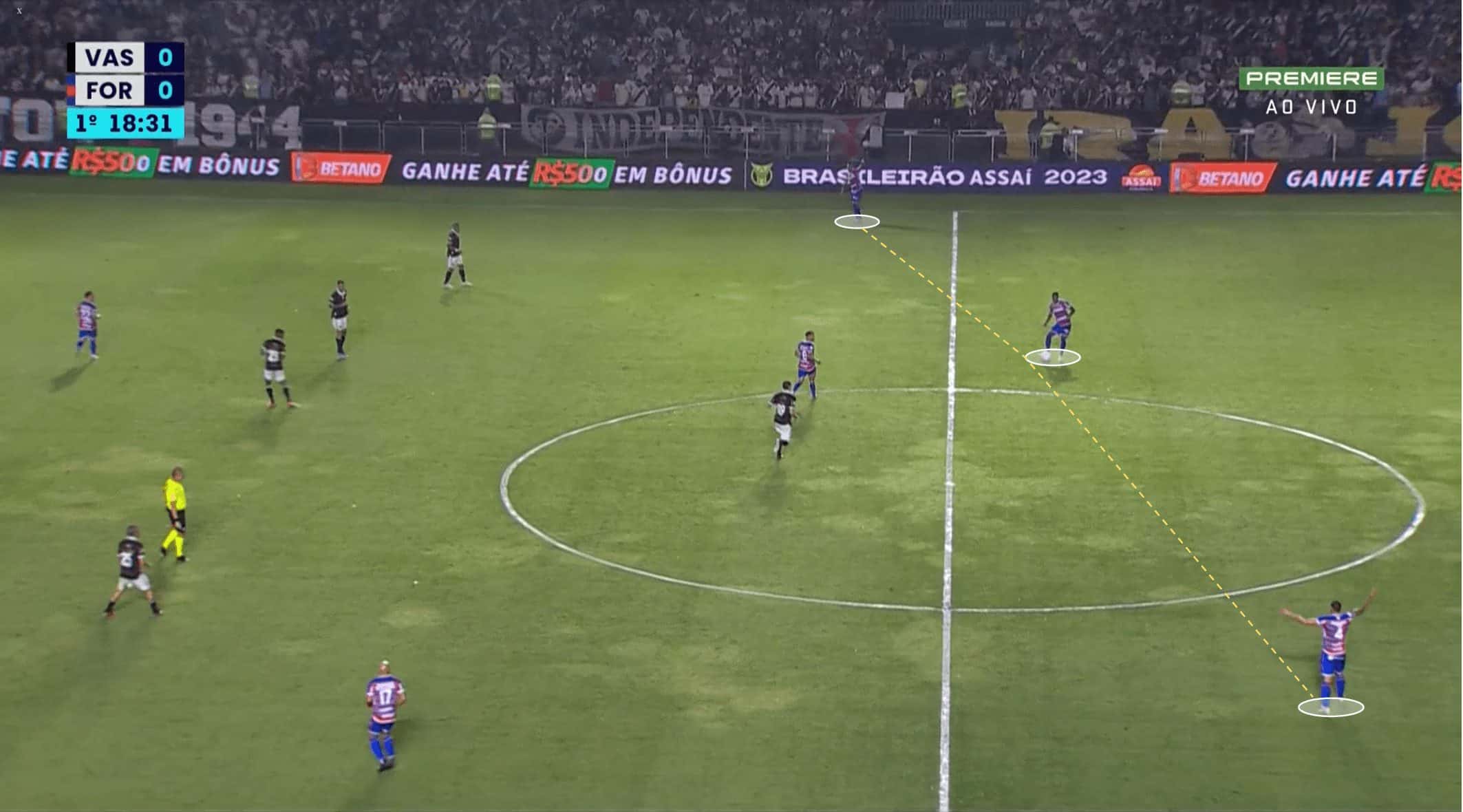
However, one of the two midfielders (Caio and Welison) can also drop into the back line if necessary, forcing Tinga to progress further on the pitch.
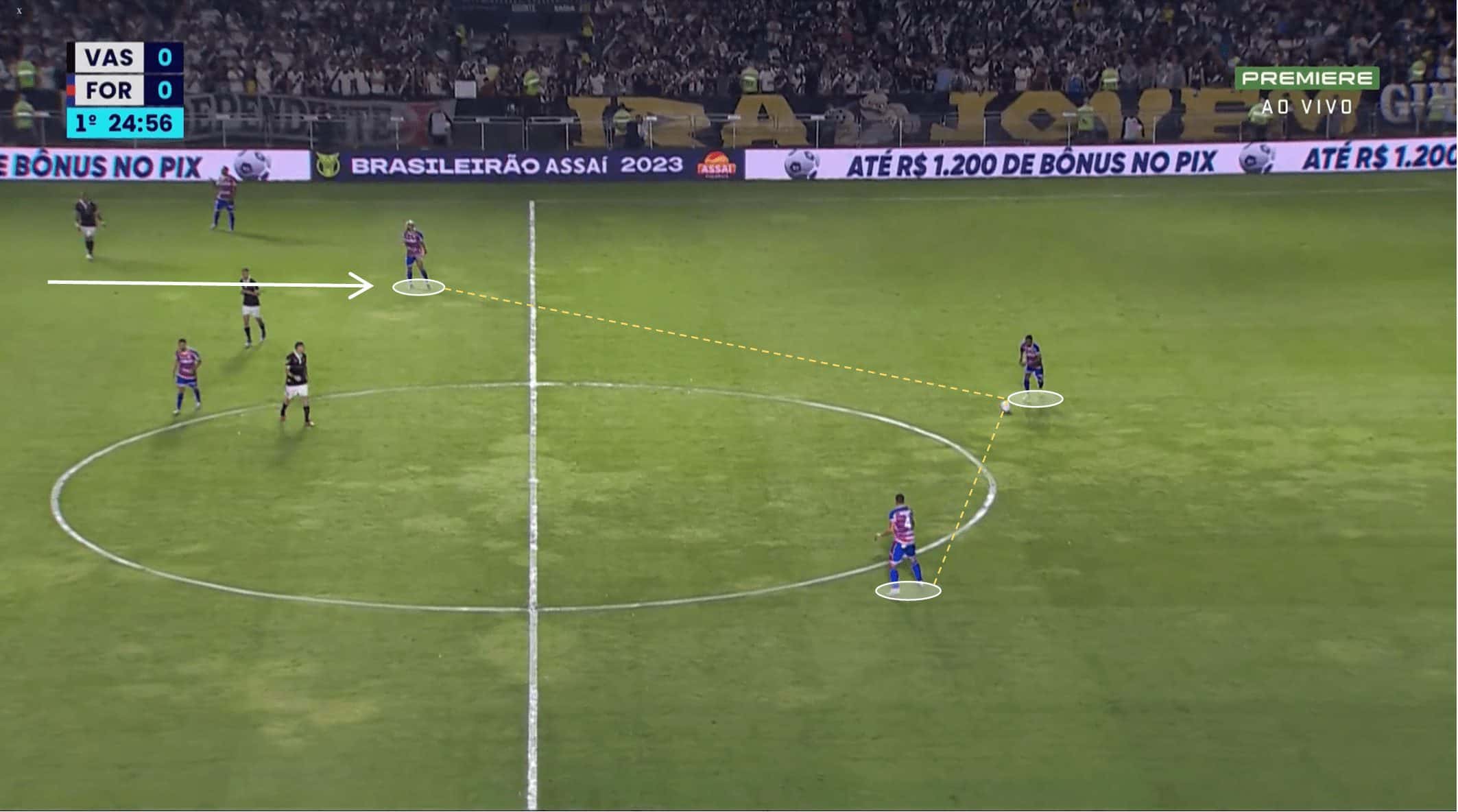
This side plays in an ‘asymmetric’ system, where Tinga is a much less vertical full-back than Pacheco (left-back). Initially, due to the lack of technique requirements, Fortaleza’s captain stays low and helps his team to build. However, as Fortaleza progresses, he also tends to ascend and create dangerous situations, primarily through crosses.
Having that said, the right-winger is the player who guarantees width, while on the opposite flank, the left-back stays projected. The interior game is normally assured by the offensive midfielder and left-winger, although these are not fixed positionings, especially on the right.
Pochettino has a higher positional freedom, and these combinations are common in his game. Even though it creates spaces, it can also obstruct their progression on the field when you have players who are uncomfortable exploring such a gap. One of the examples is related to their body shapes where, due to their habit of playing by the wing, they orient their body towards the ball and not into the opposition’s goal. That said, it is much more difficult to link through inside without this individual detail, resulting in a repetitive game where the ball is often passed back or even lost.
Still concerning their interior game, it is a must to point out the 24-year-old Caio Alexandre, who is already being sounded by Abel Ferreira’s Palmeiras. This midfielder is essential to Fortaleza’s offensive processes, where not only is he important to control the rhythm of the game, but mostly due to his ability to break lines.
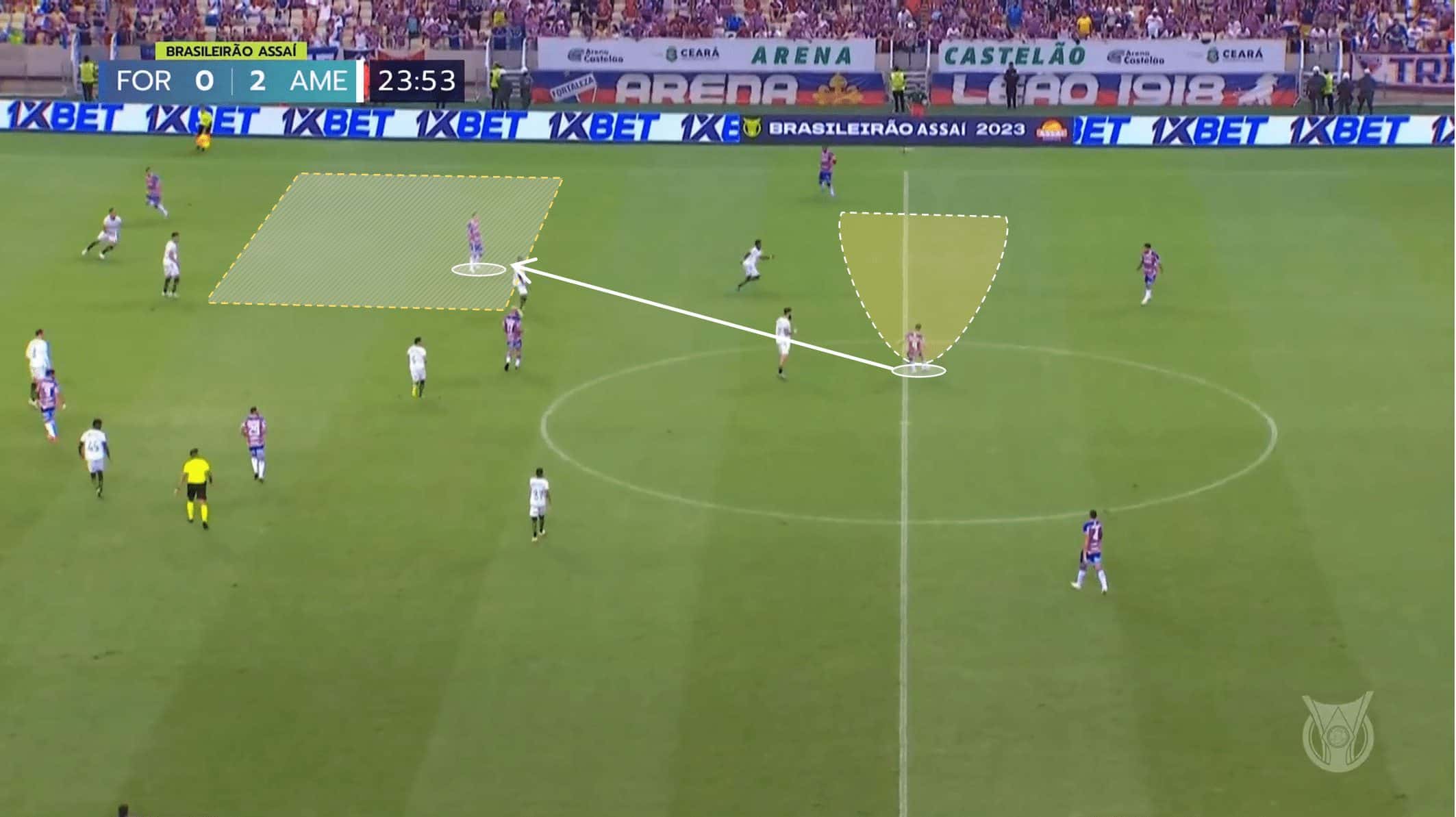
Moreover, as we can see below, Caio’s possession stats are all above the 80th percentile, which means that he’s doing better than 80% of the players in the same position as him. LDU Quito should pay particular attention to this player, and perhaps it would be positive for them to have a player surveilling him, making his life more difficult.
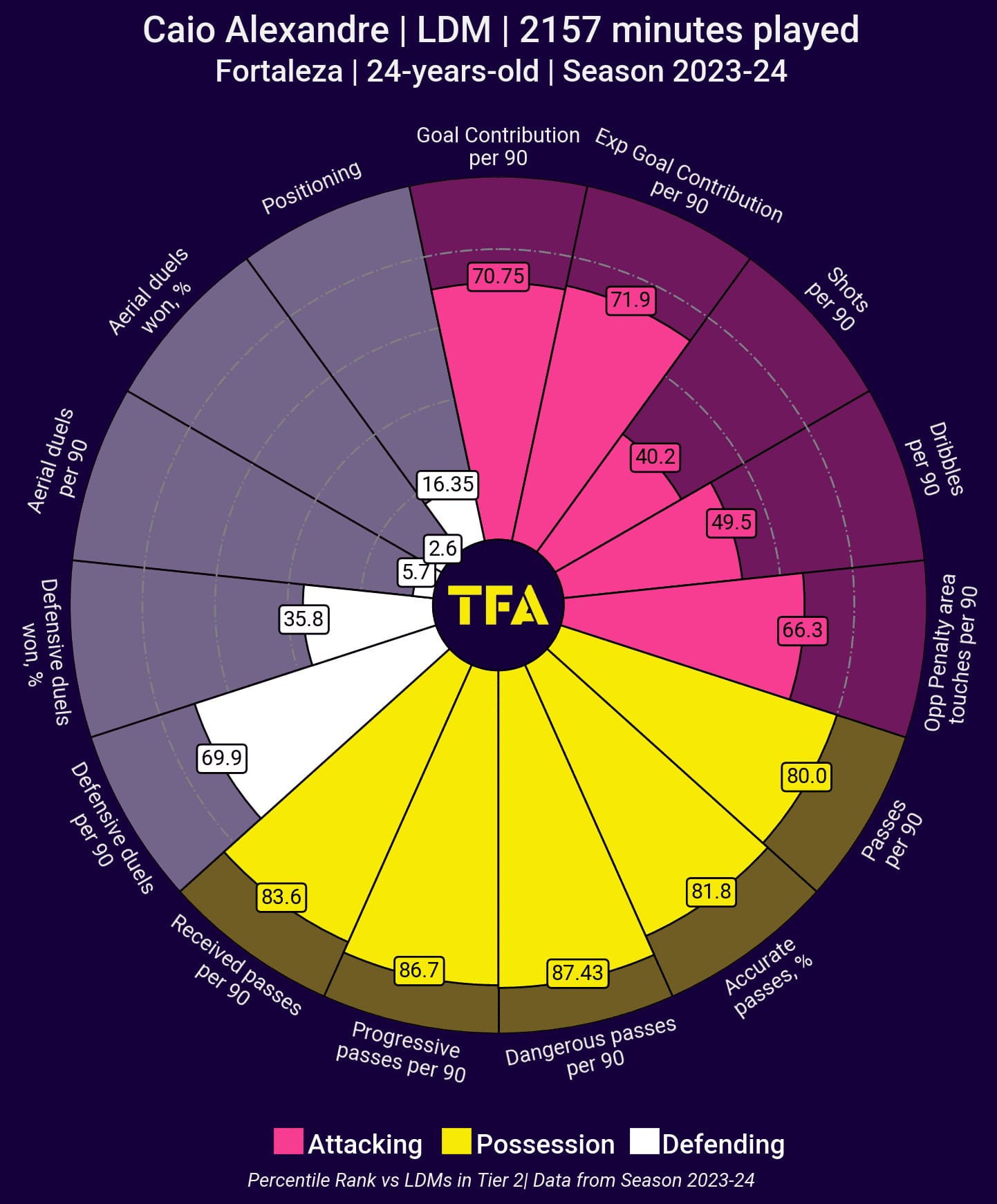
Yet, we acknowledge that he’s not an out-of-this-world player while defending, and that’s where Zé Welison enters in scene. He is a much more aggressive player and complements Caio’s defensive unavailability by being an essential presence in the midfield while out of possession. He ranked in the 92nd percentile on aerial duels won and in the 71.2nd percentile on defensive duels won.
This partnership is also visible during the build-up, where they constantly vary their positioning in relation to one another.
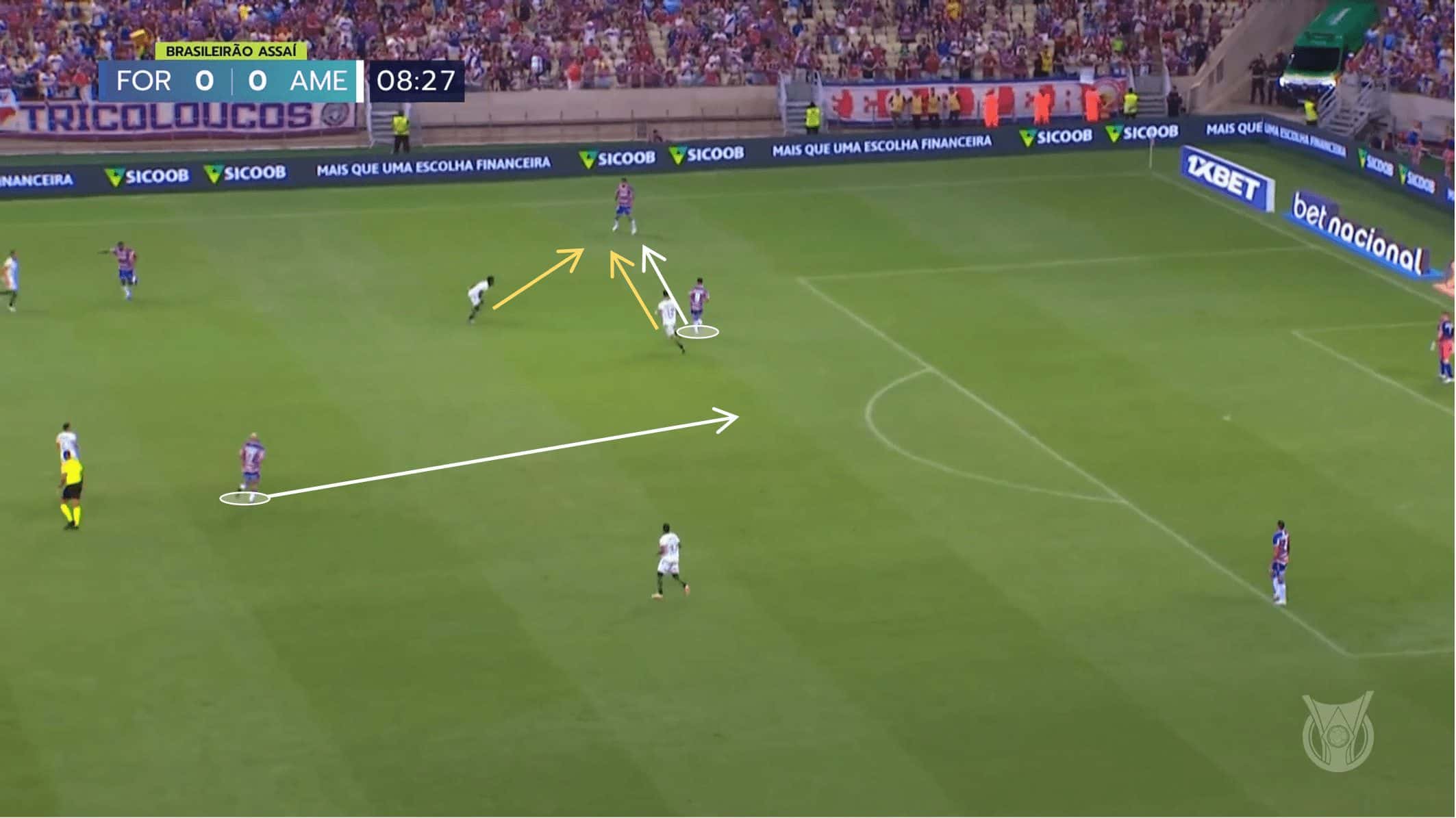
On the other hand, a team that likes to have the ball is not the same as a vertical team, and in our opinion, Fortaleza still has some work to do in this specific area. In fact, we found out that although the attackers are deep right into the opposition’s backline, they still lack mobility, simplifying the defender’s job. As we see it, the positioning is important, but without mobility, it isn’t effective, whereas a simple depth attack or even a descending movement creates a dangerous space to play.
With that said, their main alternative is playing through the corridors. By attracting the inside, they create space on the flank and take advantage of their players’ creativity, speed and technique.
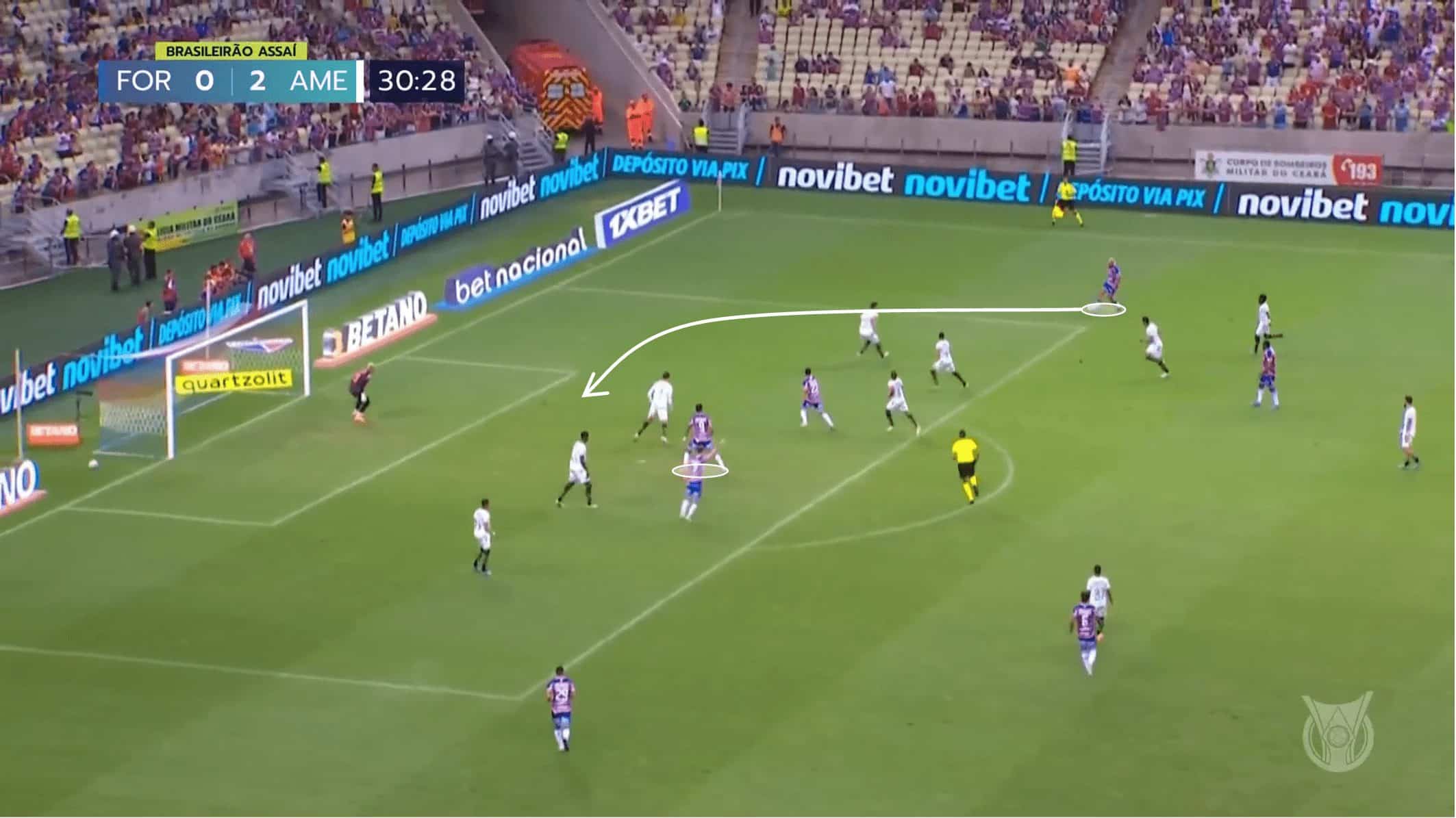
Normally, in these types of situations, Lucero (the most used striker) has no mercy and, at 32 years old, takes 18 goals this season in all competitions, and in this situation, there was no difference.
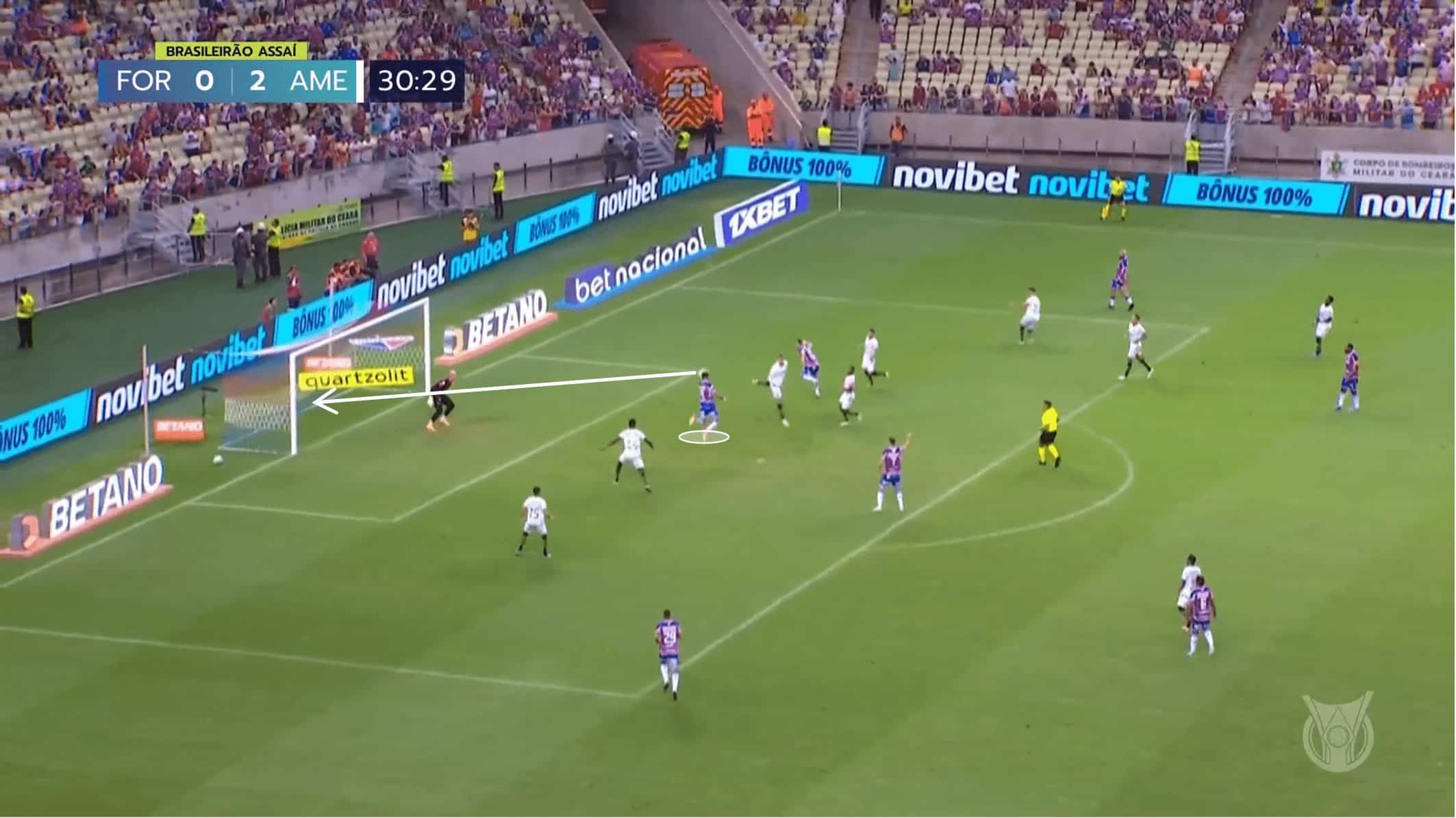
This is one of the most recurrent Fortaleza attacks, and the Ecuadorian side should be aware of that on Saturday.
As we have seen above, Fortaleza defends in a 4-4-2. However, this is not entirely accurate since Vojvoda adapts their pressing into a man-to-man marking. In other words, the 4-4-2 would make sense against a team that builds up with two players; instead, we expect they defend in a 4-3-3 since LDU Quito often plays out in a three-man backline.
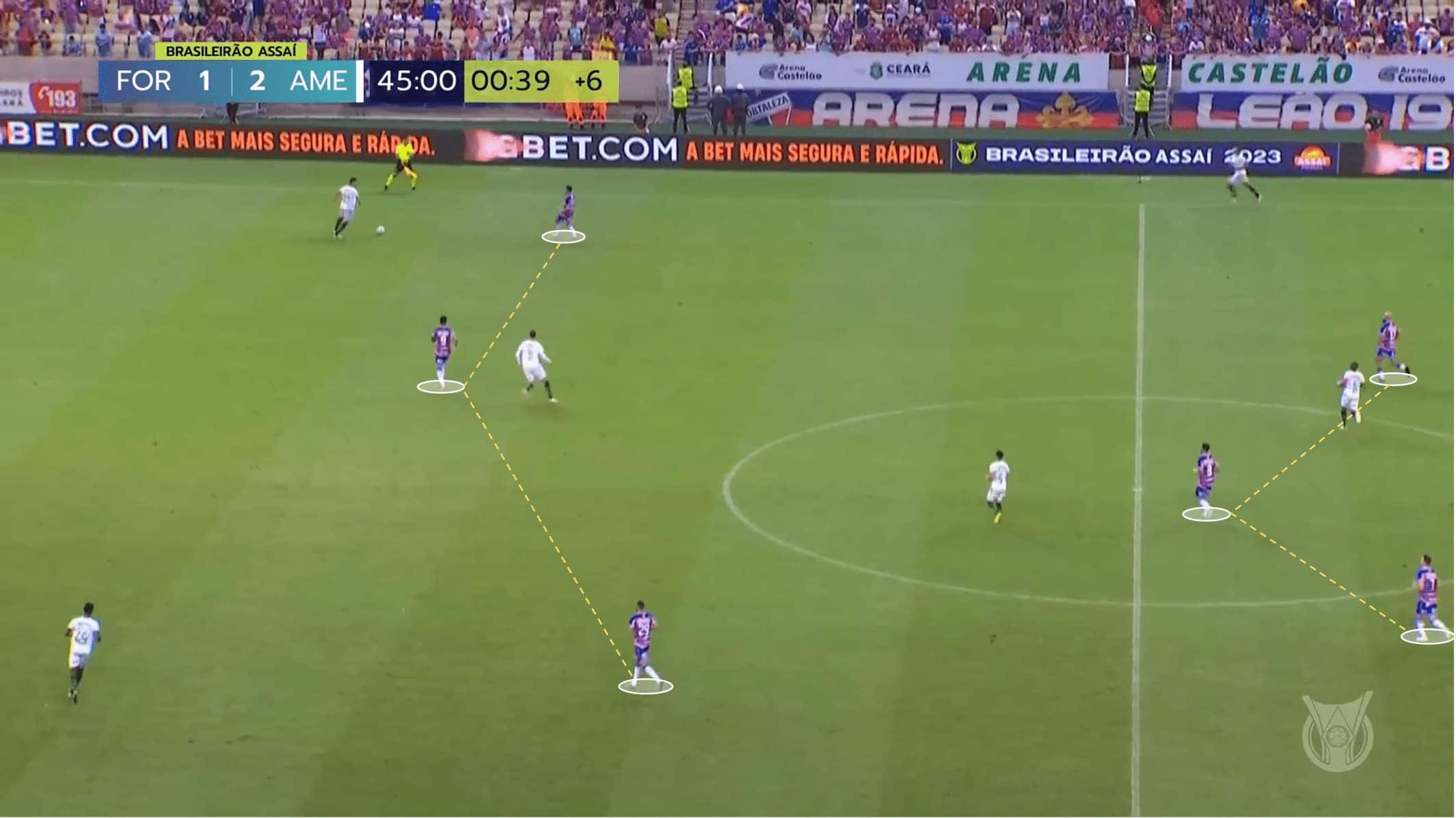
We foresee a team with a medium pressing block waiting for their opponent’s error and with their pressing indicators well-defined. Their PPDA (Passes Per Defensive Action) is around 10, which shows that Fortaleza isn’t a high-pressing-block team.
In our opinion, their main vulnerability is related to their offensive and defensive exposure. During their offensive process, the two midfielders sometimes neglect their defensive duties, leaving the centre-backs without support in a potential counterattack. On the other hand, the ball easily attracts them, leaving an immense space on their back, which can be very dangerous if LDU Quito plays out successfully.
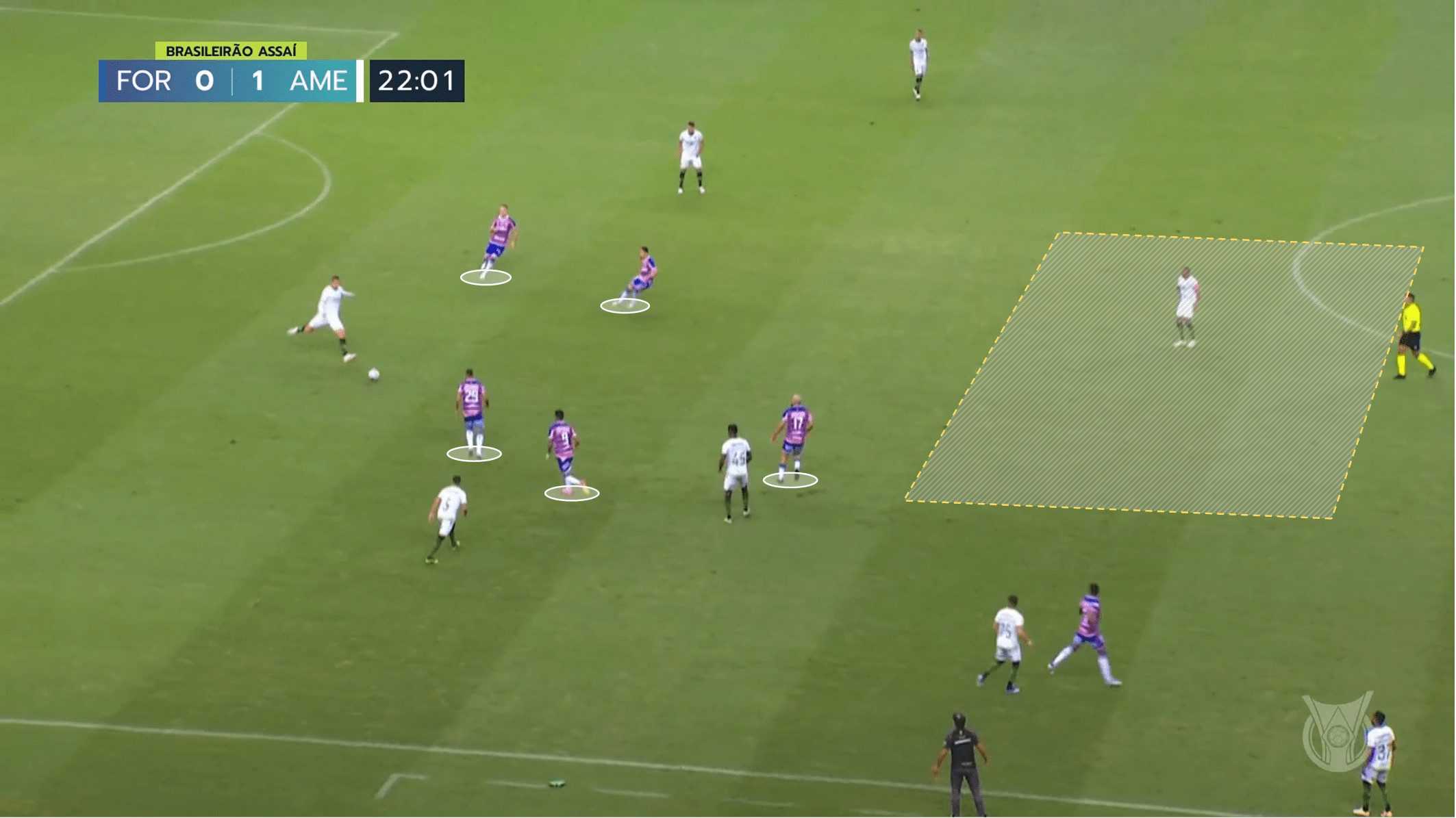
Both Zé Welison and Caio should pay particular attention to these details since the Ecuadorians are fast and dangerous on the counterattack.
LDU Quito
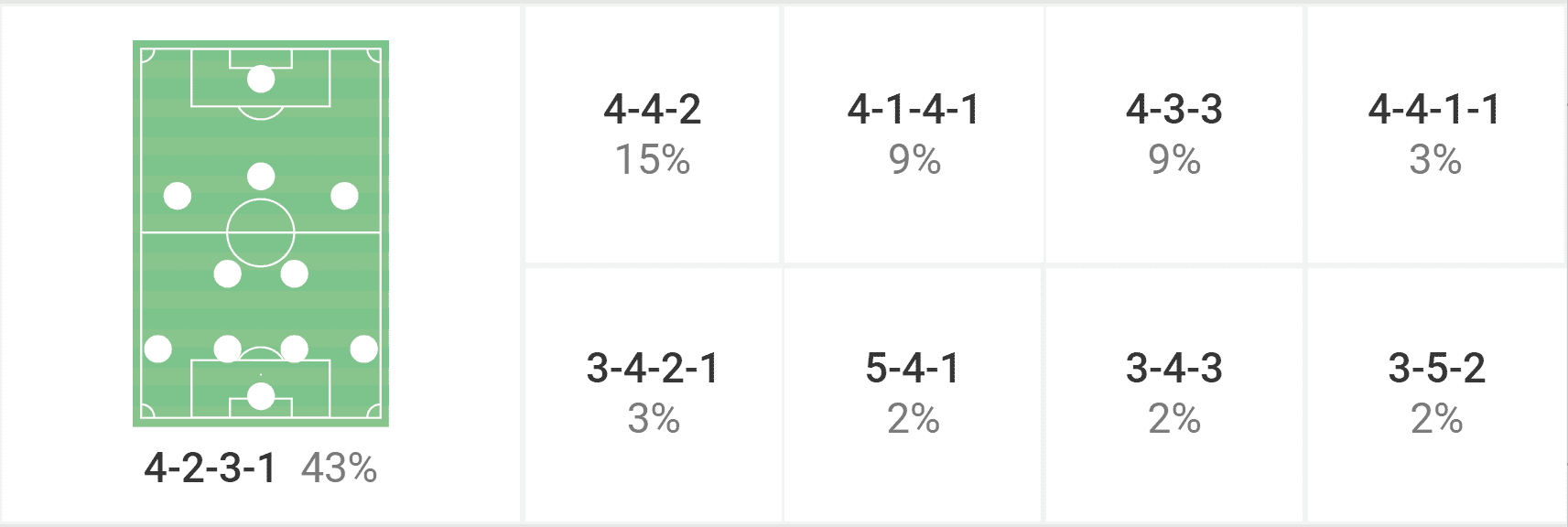
The Zubeldía’s game model has lots of similarities with Fortaleza, and their main formation also derives from a 4-2-3-1 while attacking. In fact, the Argentinian not only has the three-man build-up strategy inherent in his tactics but also instructs his right-back to drop into the backline during such a process.
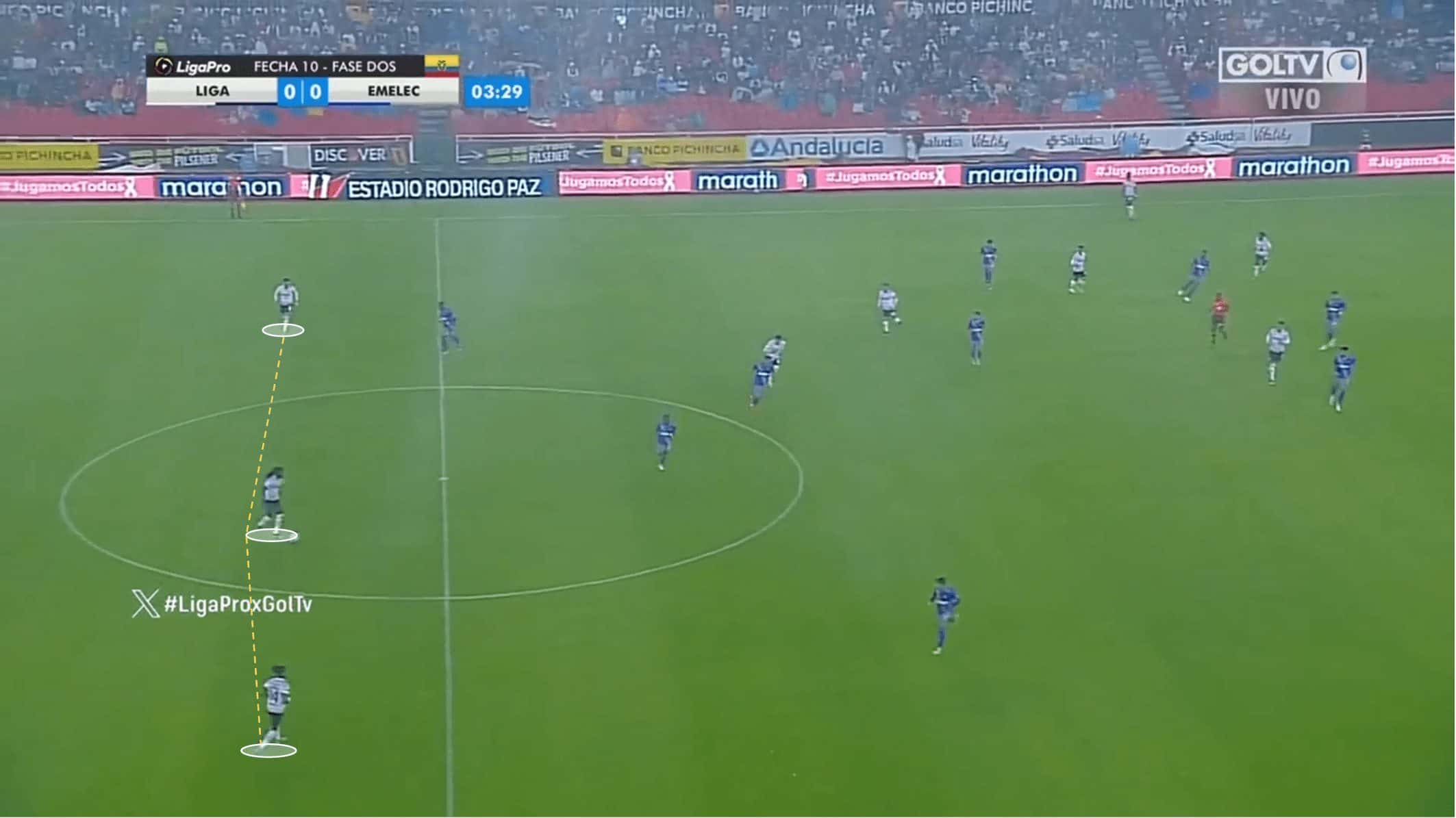
Contrarily to Fortaleza, LDU plays with a solid pivot who rarely is seen out of his normal positioning; we’re talking about Lucas Piovi. Like Caio, the 31-year-old is extremely important in Quito’s offensive strategy due to his vision and technical quality to link with the attackers.
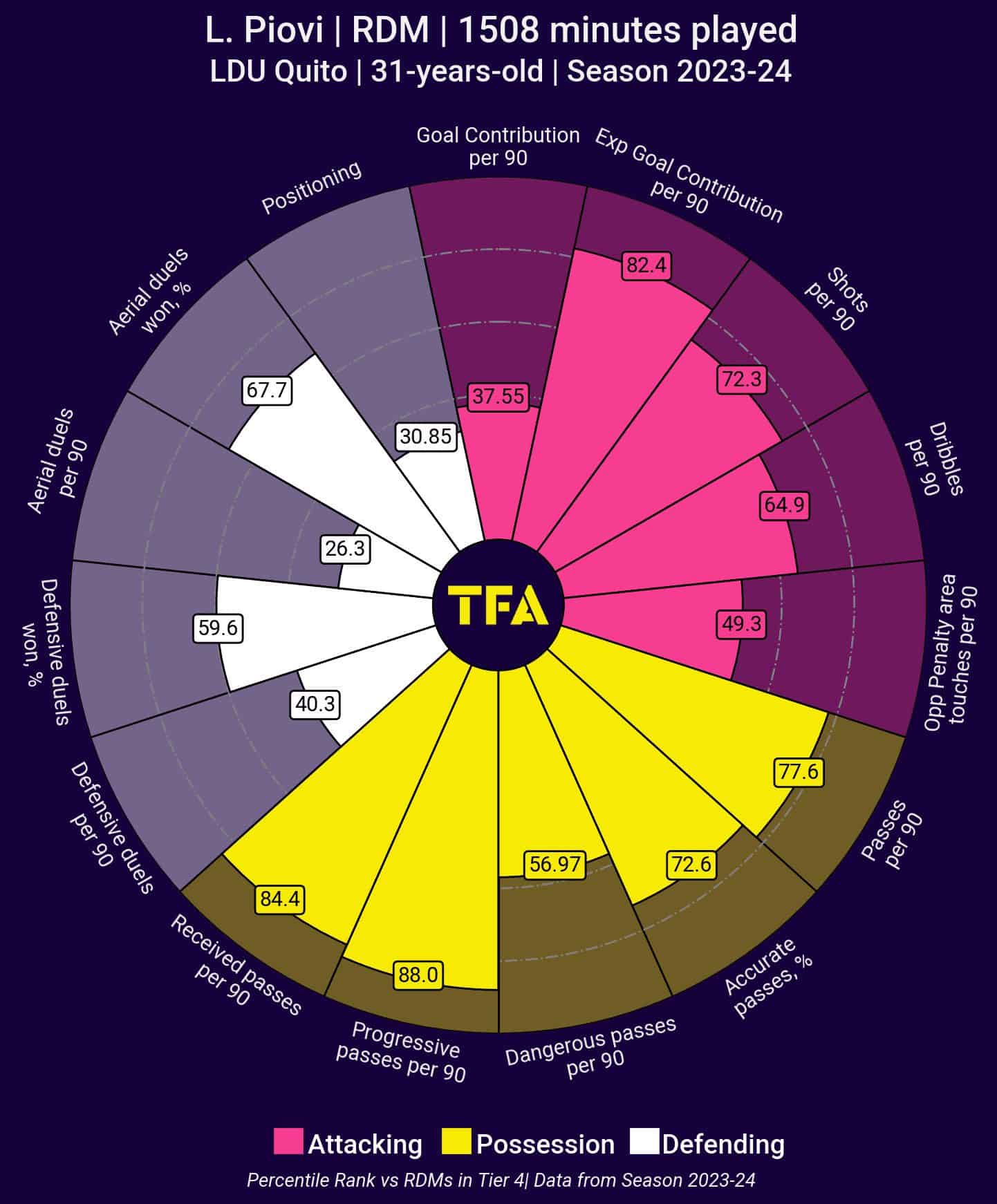
As we can see above, the Argentinian ranked in the 88th percentile on progressive passes made, which is a precise example of Piovi’s influence while attacking. Below, we have another example of Piovi’s on-the-ball game.
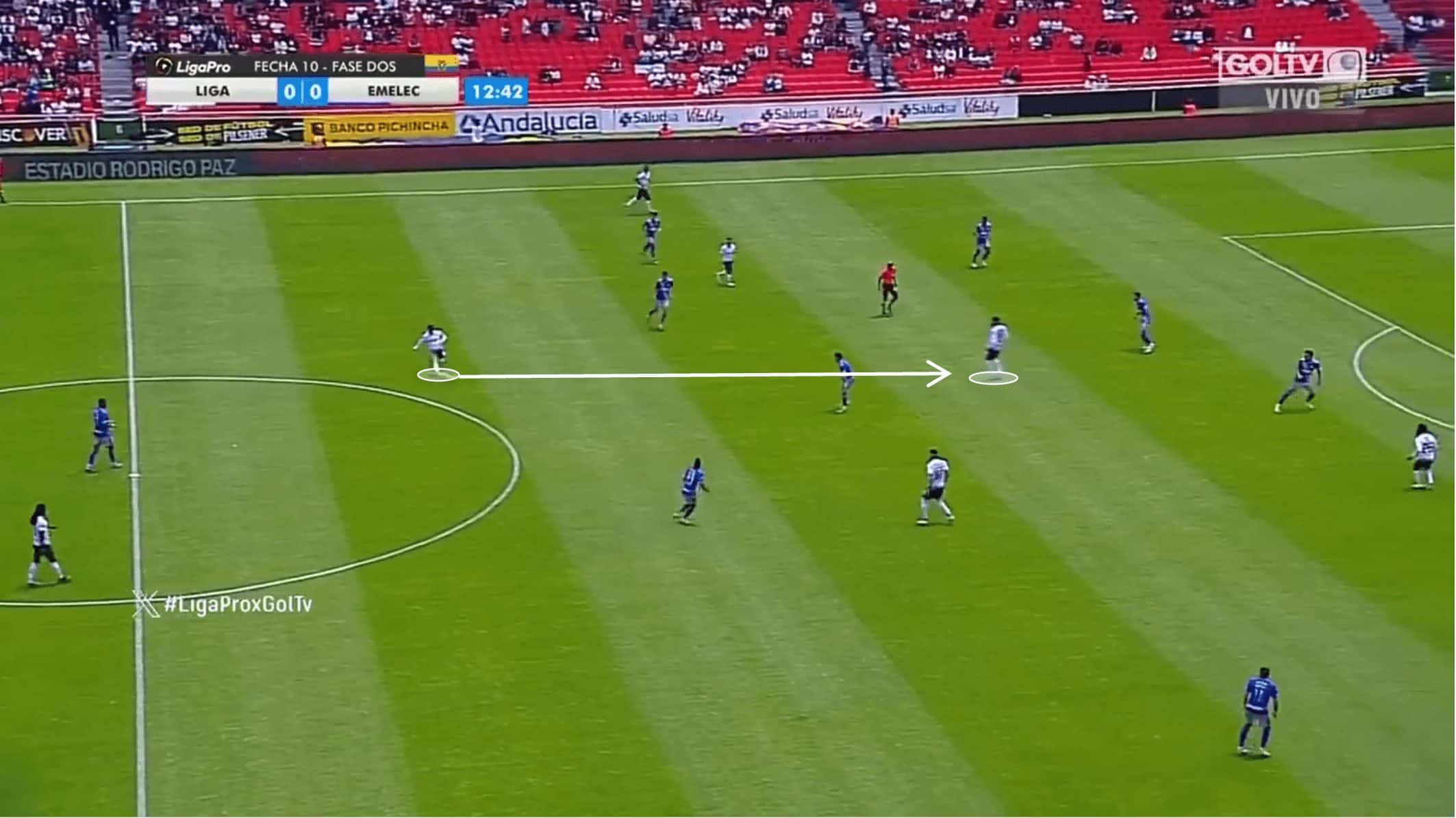
He isn’t a player endowed with a strong physique, and having that said, as we can verify in the radar, he doesn’t expose himself that much to defensive duels.
Continuing with Quito’s offensive analysis, we think that the main characteristic of Zubeldía’s philosophy is the deep positioning of their attackers. Similar to what happens with some top European sides like Arsenal, Manchester City or even Barcelona, LDU has four or five players right into the opposition’s backline.
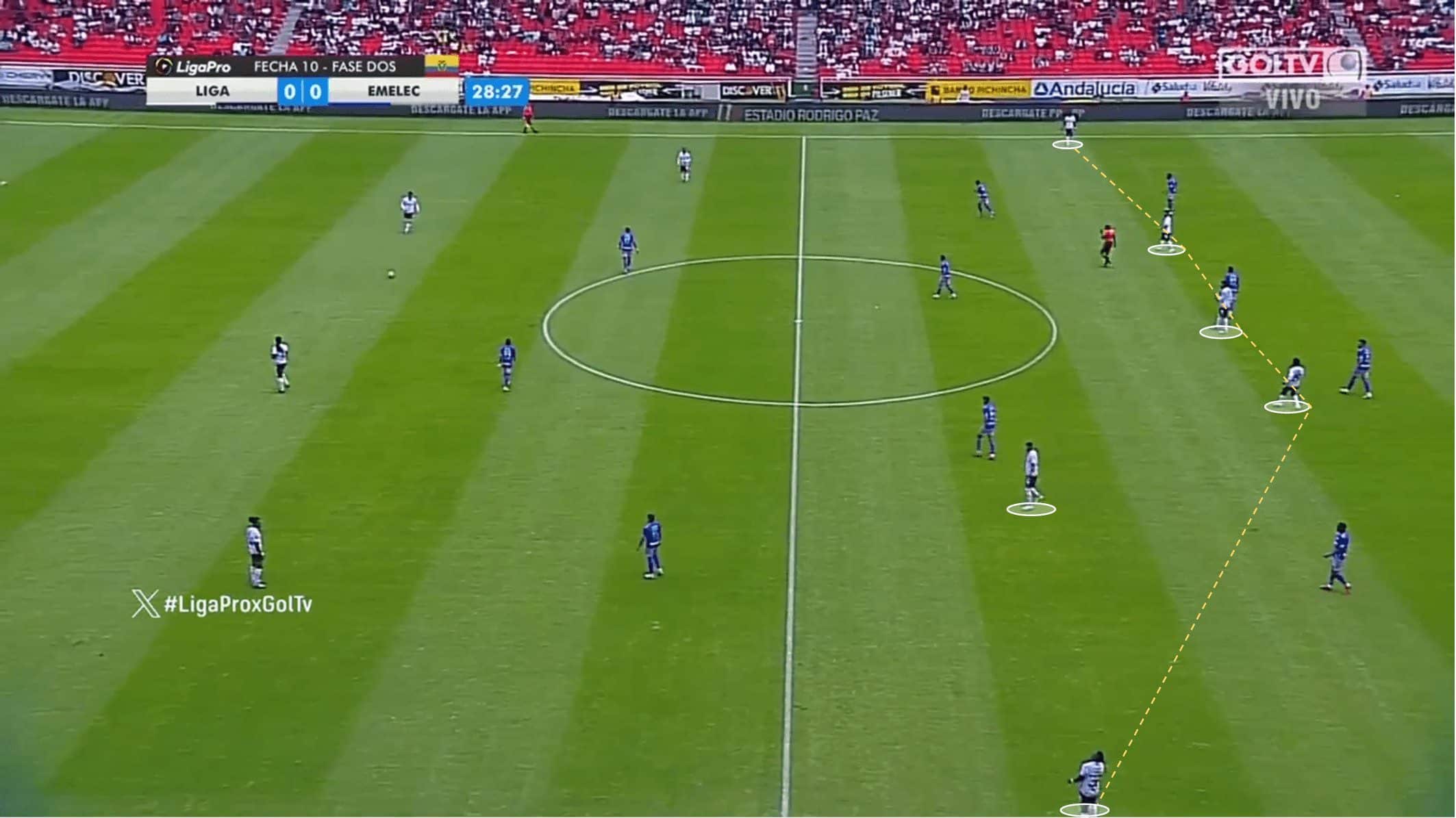
This gives an aspect of a 3-2-5/3-3-4 formation, and the main reason Zubeldía chose such an approach can be related to the creation of space to build up. Although having players near the ball carrier is vital to support the attack, it also can have a contrary effect because it attracts more opposition elements.
Against a medium-block team like Fortaleza, we expect that Quito will play their first offensive stage with no significant difficulties. However, they can struggle while linking with the more offensive elements due to their centre-backs’ man-to-man marking.
Mauricio Martínez is the midfielder who acts ahead of Piovi and has a box-to-box role, where he balances his team defensively and is vertical with individual progressions and depth attacks. When the ball is on the opposite flank, he tends to descend and give a solution near Piovi, yet when the ball is on his side, he likes to explore between the defensive and midfield lines.
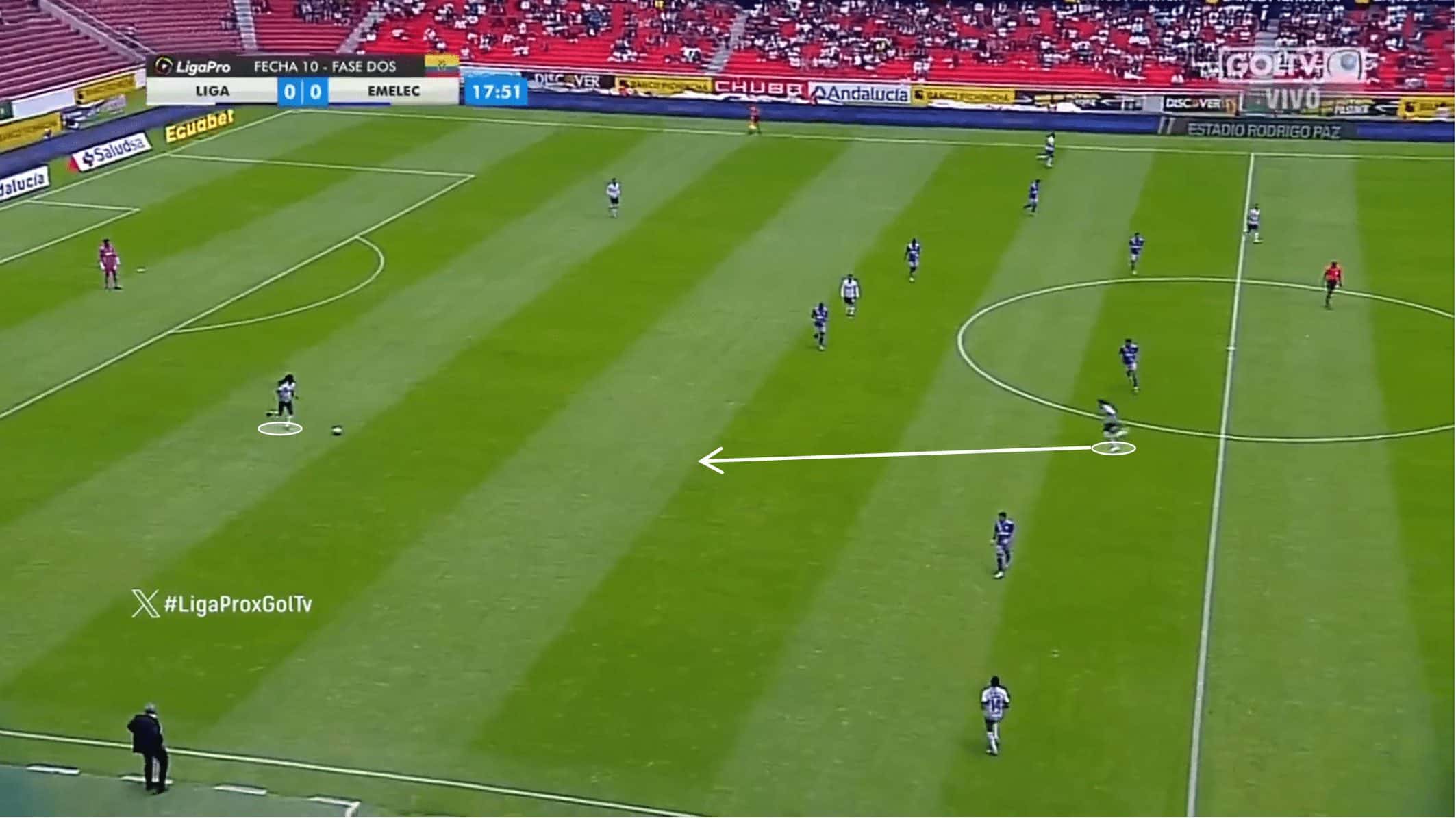
The 39-year-old Peruvian legend Paolo Guerrero is still active and has been a regular choice by the head coach to integrate the initial line-up. He’s known for being an effective striker who doesn’t need a lot of opportunities to score, and Fortaleza defenders should have that in mind on Saturday.
Another interesting detail in Quito’s game is related to their opposite flank capitalization. Interestingly, the head coach instructs the player who is supposed to give width to stay open even if the ball is on the opposite side. So they attack on one side, and then through a long pass, they quickly change the flank, creating a dangerous situation.
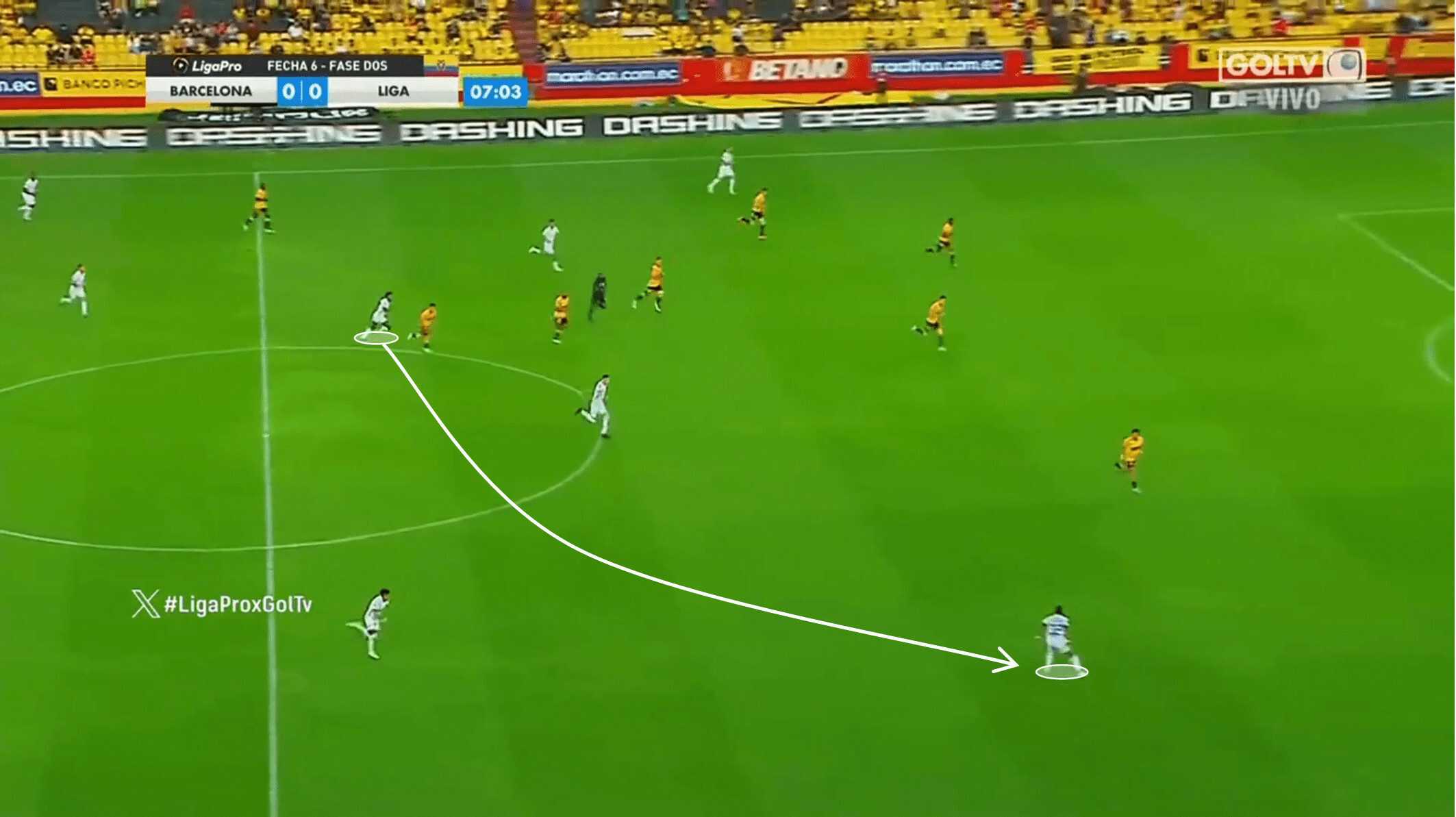
Out-of-possession, they are intense and usually use a middle-high block while pressing. Again, it can vary from strategy to strategy, but they typically line up in a 4-1-4-1 with Piovi as a single pivot and Guerrero as a single striker.

This season’s PPDA was 7.61. However, we’d be naive if we thought they would use such a risky approach in a South American Final as they do in domestic matches. Yet, it’s a sign that they can obstruct Fortaleza’s build-up; as it goes, they should be aware of that.
One negative aspect of Quito while defending is Renato Ibarra, who sometimes neglects his team’s defensive cohesion by not descending with the opposition’s full-back. This can create considerable constraints for his teammate, normally Quinteros, who has to face a 1v2 on the flank.

Even if the midfielder covers him, which sometimes is the case, they still create a gap in the middle.
Conclusion
Although in a different reality, in this tactical preview in the form of a scout report, we found that Fortaleza’s and LDU Quito’s game plans are quite identical, where both teams like to build from the back with three elements and like to expose themselves by having their attackers quite deep on the field.
Firstly, we went over the Brazilian side, which most of all is dangerous by the flanks, where they had quick and skilled players. The cross is a ubiquitous tool used by them, which is seized by the significant number of players inside the box. We also highlighted Caio Alexandre as the one to watch since he is essential for Fortaleza due to his technique and, above all, his tactical understanding. In Saturday’s final, the two midfielders should be especially alert to at least one of them being ahead of the centre-backs so that they are able to assure their team defensively, especially during transitions.
LDU Quito, on the other side, likes to upset their opponents through their interior game. However, we foresee a much more difficult game for them in this aspect against Fortaleza. In this Ecuadorian side, we highlighted their captain Piovi, who has been very important to them, especially during possession. They are also an intense, pressing team that feels comfortable forcing the opposition to practice a more direct football. Some vulnerabilities were also detailed, like Ibarra’s lack of intensity while defending in the right flank, opening a window for Fortaleza’s dangerous attack through the left flank.
Overall, we think that it will be a balanced game between a historical Ecuadorian side and a rising Fortaleza. On the one hand, LDU can feel more favourable due to their international record, but on the other, they play in a much less demanding domestic competition than this Brazilian side.






Comments